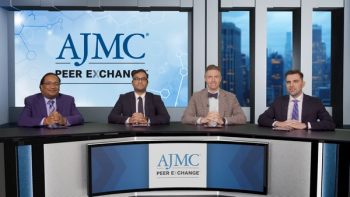
Dupilumab Shows Positive Results in Children With EoE as Young as Age 1
A late-stage trial of dupilumab in young children showed the biologic induced remission in eosinophilic esophagitis (EoE).
Sanofi and Regeneron Thursday announced positive results from a pivotal phase 3 trial of dupilumab (Dupixent) in children aged 1 to 11 years who have
Dupilumab
EoE was unknown a few decades ago; the chronic inflammatory disorder creates difficulty swallowing, difficulty eating, choking, and food getting stuck in the esophagus.
The monoclonal antibody acts on type 2 inflammation that drives the disease and causes eosinophils, a type of white blood cell, to flourish in the tissue of the esophagus, causing inflammation.
The study met its primary end point of histological disease remission at 16 weeks in both higher- and lower-dose weight-tiered regimens. In addition, children receiving a higher dose of the biologic saw improvements in endoscopic findings and increased body weight.
The trial is ongoing with a 36-week extended active treatment period to evaluate long-term outcomes, and the
Safety results for dupilumab were generally similiar as when used in older children and adults. In the trial, 102 children were randomized to receive dupilumab in either a higher-dose (n = 37) or lower-dose (n = 31) regimen, based on body weight, or placebo (n = 34).
At 16 weeks, 68% of children on the higher dose and 58% of patients on the lower dose of the drug achieved the primary end point of significant histological disease remission, as defined as peak esophageal intraepithelial eosinophil count of ≤6 eosinophils (eos)/high power field (hpf) compared with 3% of children on placebo (P <.0001 for both).
Additionally, by week 16, children on the higher dose of the drug had an 86% reduction in peak eos/hpf count from baseline compared with a 21% increase for placebo (P <.0001). They also had a 0.88 and 0.84 reduction from baseline in disease severity and extent, respectively, as measured at the microscopic level in biopsy specimens compared with a 0.02 and 0.05 increase for placebo (both P <.0001).
There was also 3.5-point reduction in abnormal endoscopic findings from baseline compared with a 0.3-point increase for placebo (P <.0001).
Newsletter
Stay ahead of policy, cost, and value—subscribe to AJMC for expert insights at the intersection of clinical care and health economics.






